Asymmetric regulation of quorum-sensing receptors drives autoinducer-specific gene expression programs in Vibrio cholerae
- PMID: 28552952
- PMCID: PMC5467912
- DOI: 10.1371/journal.pgen.1006826
Asymmetric regulation of quorum-sensing receptors drives autoinducer-specific gene expression programs in Vibrio cholerae
Abstract
Quorum sensing (QS) is a mechanism of chemical communication that bacteria use to monitor cell-population density and coordinate group behaviors. QS relies on the production, detection, and group-wide response to extracellular signal molecules called autoinducers. Vibrio cholerae employs parallel QS circuits that converge into a shared signaling pathway. At high cell density, the CqsS and LuxPQ QS receptors detect the intra-genus and inter-species autoinducers CAI-1 and AI-2, respectively, to repress virulence factor production and biofilm formation. We show that positive feedback, mediated by the QS pathway, increases CqsS but not LuxQ levels during the transition into QS-mode, which amplifies the CAI-1 input into the pathway relative to the AI-2 input. Asymmetric feedback on CqsS enables responses exclusively to the CAI-1 autoinducer. Because CqsS exhibits the dominant QS signaling role in V. cholerae, agonism of CqsS with synthetic compounds could be used to control pathogenicity and host dispersal. We identify nine compounds that share no structural similarity to CAI-1, yet potently agonize CqsS via inhibition of CqsS autokinase activity.
Conflict of interest statement
The authors have declared that no competing interests exist.
Figures
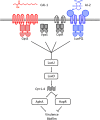

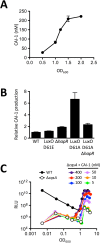
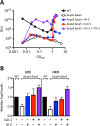
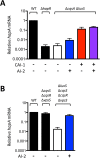
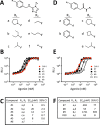
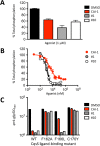
Similar articles
-
The intragenus and interspecies quorum-sensing autoinducers exert distinct control over Vibrio cholerae biofilm formation and dispersal.PLoS Biol. 2019 Nov 11;17(11):e3000429. doi: 10.1371/journal.pbio.3000429. eCollection 2019 Nov. PLoS Biol. 2019. PMID: 31710602 Free PMC article.
-
Three parallel quorum-sensing systems regulate gene expression in Vibrio harveyi.J Bacteriol. 2004 Oct;186(20):6902-14. doi: 10.1128/JB.186.20.6902-6914.2004. J Bacteriol. 2004. PMID: 15466044 Free PMC article.
-
Quorum-sensing autoinducer molecules produced by members of a multispecies biofilm promote horizontal gene transfer to Vibrio cholerae.FEMS Microbiol Lett. 2011 Sep;322(1):68-76. doi: 10.1111/j.1574-6968.2011.02328.x. Epub 2011 Jun 27. FEMS Microbiol Lett. 2011. PMID: 21658103
-
Parallel quorum sensing signaling pathways in Vibrio cholerae.Curr Genet. 2016 May;62(2):255-60. doi: 10.1007/s00294-015-0532-8. Epub 2015 Nov 6. Curr Genet. 2016. PMID: 26545759 Free PMC article. Review.
-
Recent progresses on AI-2 bacterial quorum sensing inhibitors.Curr Med Chem. 2012;19(2):174-86. doi: 10.2174/092986712803414187. Curr Med Chem. 2012. PMID: 22320296 Review.
Cited by
-
Aggregation of Vibrio cholerae by Cationic Polymers Enhances Quorum Sensing but Overrides Biofilm Dissipation in Response to Autoinduction.ACS Chem Biol. 2018 Oct 19;13(10):3021-3029. doi: 10.1021/acschembio.8b00815. Epub 2018 Sep 20. ACS Chem Biol. 2018. PMID: 30204411 Free PMC article.
-
Quorum sensing controls Vibrio cholerae multicellular aggregate formation.Elife. 2018 Dec 24;7:e42057. doi: 10.7554/eLife.42057. Elife. 2018. PMID: 30582742 Free PMC article.
-
Intracellular Signaling by the comRS System in Streptococcus mutans Genetic Competence.mSphere. 2018 Oct 31;3(5):e00444-18. doi: 10.1128/mSphere.00444-18. mSphere. 2018. PMID: 30381353 Free PMC article.
-
Secreted Proteases Control the Timing of Aggregative Community Formation in Vibrio cholerae.mBio. 2021 Dec 21;12(6):e0151821. doi: 10.1128/mBio.01518-21. Epub 2021 Nov 23. mBio. 2021. PMID: 34809464 Free PMC article.
-
Small RNA-Based Regulation of Bacterial Quorum Sensing and Biofilm Formation.Microbiol Spectr. 2018 Jul;6(4):10.1128/microbiolspec.rwr-0017-2018. doi: 10.1128/microbiolspec.RWR-0017-2018. Microbiol Spectr. 2018. PMID: 30003870 Free PMC article. Review.
References
-
- Papenfort K, Bassler BL. Quorum sensing signal-response systems in Gram-negative bacteria. Nat Rev Microbiol. 2016;14(9):576–88. doi: 10.1038/nrmicro.2016.89 - DOI - PMC - PubMed
-
- Higgins DA, Pomianek ME, Kraml CM, Taylor RK, Semmelhack MF, Bassler BL. The major Vibrio cholerae autoinducer and its role in virulence factor production. Nature. 2007;450(7171):883–6. doi: 10.1038/nature06284 - DOI - PubMed
-
- Chen X, Schauder S, Potier N, Van Dorsselaer A, Pelczer I, Bassler BL, et al. Structural identification of a bacterial quorum-sensing signal containing boron. Nature. 2002;415(s):545–9. - PubMed
-
- Wei Y, Perez LJ, Ng W-L, Semmelhack MF, Bassler BL. Mechanism of Vibrio cholerae autoinducer-1 biosynthesis. ACS Chem Biol. 2011;6(4):356–65. doi: 10.1021/cb1003652 - DOI - PMC - PubMed
MeSH terms
Substances
Grants and funding
LinkOut - more resources
Full Text Sources
Other Literature Sources
Molecular Biology Databases

